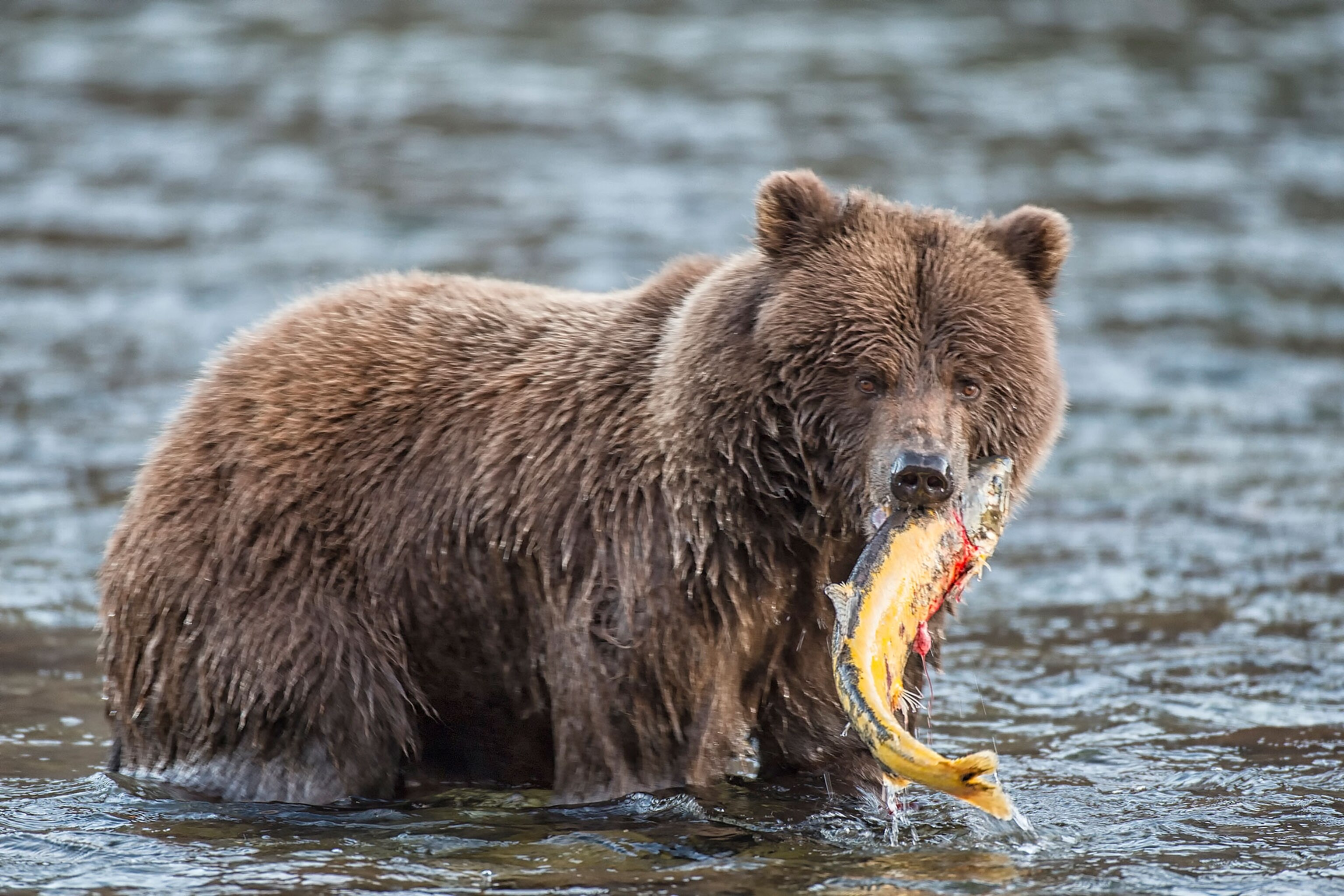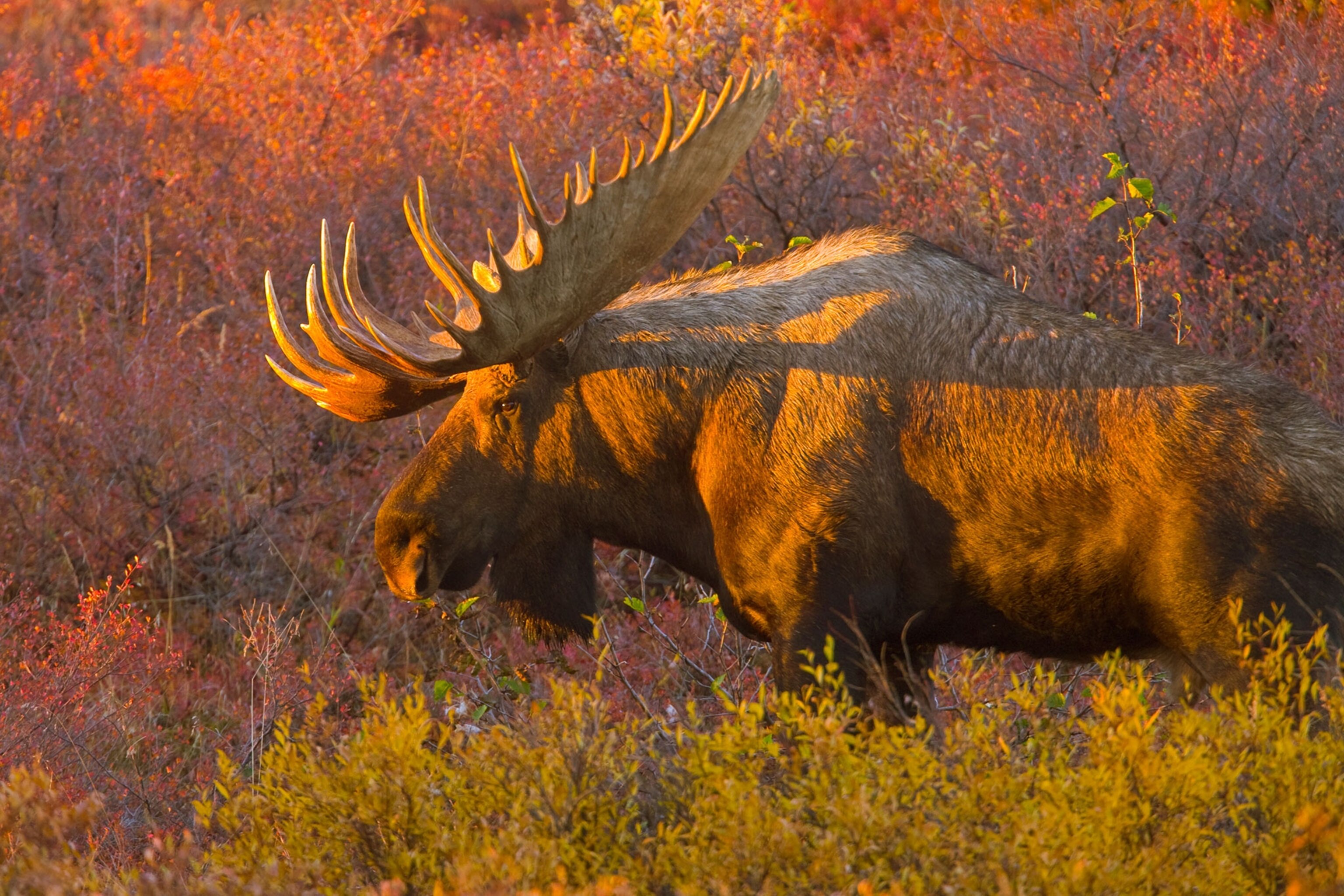It’s officially fall, which for humans often means snuggling up inside and anticipating the holidays ahead. Conversely, for many animals, it’s a season of intense preparation for the looming winter.
From deer to birds to bears, many species are triggered by the shortening days to switch into a frenetic mode of gathering food, finding mates, and more. (See gorgeous pictures that celebrate the arrival of fall.)
Studying such behaviors in wildlife can give scientists an insight into how they’ve adapted to cope with environmental challenges—such as frigid temperatures—and how such resilience can help them with future setbacks, such as rising temperatures due to climate change.
Here are some species that go into overdrive when the leaves begin to fall.
Rutting deer
A rut usually means being stuck, but for members of the deer family—including its largest species, the moose—it means mating season. From September to mid-October, males of the otherwise solitary moose—a species that ranges across the northern U.S., Canada, Alaska, and northern Europe—seek out other males to fight for access to females.
A surge in testosterone causes the soft, fuzzy skin covering on moose antlers, called velvet, to shed, turning them into sharp weapons that they’ll wield in battle.
Research spanning nearly 40 years in Alaska’s Denali National Park has found that these victorious males—usually the largest and highest-ranking—are responsible for 88 percent of mating events.
Females birth their calves in the spring, usually starting in late May. (Read about rare moose triplets spotted in 2018 in Canada.)
Resting birds
As birds fly south for the winter, several species take autumnal pit stops along the way.
After leaving the U.S. Pacific Northwest and Midwest, eared grebes, for example, gather in great numbers to eat and molt at Mono Lake in California and the Great Salt Lake in Utah. Other species that take rest stops include Franklin’s gulls on the Great Plains, wood ducks on the Great Lakes, and red knots and other shorebirds on various beaches. (See our amazing interactive map of bird migration.)

Red knots, which migrate annually from the Arctic to the Southern Hemisphere and back, will travel 1,500 miles at a clip and then pause to rest, feed, and molt at these places, faithfully returning to the same ones each year.
Resilient bears
In fall, North American bear species are busily engaged in a process called hyperphagia, eating and drinking as much as they can to gain weight for their long winter hibernation.
While people would suffer serious health consequences from an extended period of obesity and inactivity, a recent study in Communications Biology found that grizzly bear genes are regulated differently during fall and winter to cope with such physical trials. (Learn how hibernating bears keep weirdly warm.)

For instance, during hibernation, their genes are expressed in a way that reduces sensitivity to insulin, so that their blood sugar stays at a normal level and is spared for use by the brain, which needs it during the long sleep.
This also allows the big mammals to metabolize fat during hibernation, something resting humans can’t do, notes study co-author Joanna Kelley, an evolutionary geneticist at Washington State University.
Gluttonous ladybugs
There are around 5,000 species of ladybug, and many—such as multicolored Asian lady beetles, which are invasive in North America—will “be fattening up on thousands of aphids and soft-bodied prey” as fall approaches, says Mike Raupp, an entomologist at the University of Maryland. After this banquet, the insects will gather, sometimes in large masses, where they’ll enter a dormant state to wait out the long winter.
Ladybugs prefer to hunker down in the crevices of rocky outcrops, but will sometimes congregate instead on the sides of people’s houses—thinking “that looks like a wonderful, big rock face,” Raupp quips. (Read how without bugs, we’d all be dead.)
This ladybug heap often goes unnoticed by predators, but should a hungry animal discover one of these groups and not heed their bright warning colors, the insects may turn to reflex bleeding. Smelly hemolymph, aka bug blood, will seep out of their “knees” and give the disappointed predator a mouthful of yuck, he says.
'Hibernating' bird
While other birds are busy flying south for the winter, the common poorwill of western North America and Mexico is having a staycation.
These nocturnal members of the nightjar family are the only bird species known to go into a torpor, a similar state to hibernation, during which the animals can bring their body temperature down to 41 degrees.

Poorwills “hibernate” the way they nest—on the ground, where their mottled brown camouflage renders them almost invisible. Like mammals, they’re at their highest weight before they go into their torpor, says Mark Brigham, a biologist at the University of Regina in Saskatchewan.
In his research in Arizona, Brigham has discovered hibernating poorwills face the southwest, likely so the afternoon sun will help warm them as a complement to their body's own metabolism, he says.
Brigham co-authored a study, published this year in the journal Oecologia, that found the average poorwill torpor is about five days—but that one especially sleepy bird slumbered for 45.
Give us the remote control—we’ll see if we can beat that time.
You May Also Like
Go Further
Animals
- This ‘saber-toothed’ salmon wasn’t quite what we thoughtThis ‘saber-toothed’ salmon wasn’t quite what we thought
- Why this rhino-zebra friendship makes perfect senseWhy this rhino-zebra friendship makes perfect sense
- When did bioluminescence evolve? It’s older than we thought.When did bioluminescence evolve? It’s older than we thought.
- Soy, skim … spider. Are any of these technically milk?Soy, skim … spider. Are any of these technically milk?
- This pristine piece of the Amazon shows nature’s resilienceThis pristine piece of the Amazon shows nature’s resilience
Environment
- This pristine piece of the Amazon shows nature’s resilienceThis pristine piece of the Amazon shows nature’s resilience
- Listen to 30 years of climate change transformed into haunting musicListen to 30 years of climate change transformed into haunting music
- This ancient society tried to stop El Niño—with child sacrificeThis ancient society tried to stop El Niño—with child sacrifice
- U.S. plans to clean its drinking water. What does that mean?U.S. plans to clean its drinking water. What does that mean?
History & Culture
- Meet the original members of the tortured poets departmentMeet the original members of the tortured poets department
- Séances at the White House? Why these first ladies turned to the occultSéances at the White House? Why these first ladies turned to the occult
- Gambling is everywhere now. When is that a problem?Gambling is everywhere now. When is that a problem?
- Beauty is pain—at least it was in 17th-century SpainBeauty is pain—at least it was in 17th-century Spain
- The real spies who inspired ‘The Ministry of Ungentlemanly Warfare’The real spies who inspired ‘The Ministry of Ungentlemanly Warfare’
Science
- Here's how astronomers found one of the rarest phenomenons in spaceHere's how astronomers found one of the rarest phenomenons in space
- Not an extrovert or introvert? There’s a word for that.Not an extrovert or introvert? There’s a word for that.
- NASA has a plan to clean up space junk—but is going green enough?NASA has a plan to clean up space junk—but is going green enough?
- Soy, skim … spider. Are any of these technically milk?Soy, skim … spider. Are any of these technically milk?
- Can aspirin help protect against colorectal cancers?Can aspirin help protect against colorectal cancers?
Travel
- What it's like to hike the Camino del Mayab in MexicoWhat it's like to hike the Camino del Mayab in Mexico
- Is this small English town Yorkshire's culinary capital?Is this small English town Yorkshire's culinary capital?
- This chef is taking Indian cuisine in a bold new directionThis chef is taking Indian cuisine in a bold new direction
- Follow in the footsteps of Robin Hood in Sherwood ForestFollow in the footsteps of Robin Hood in Sherwood Forest








